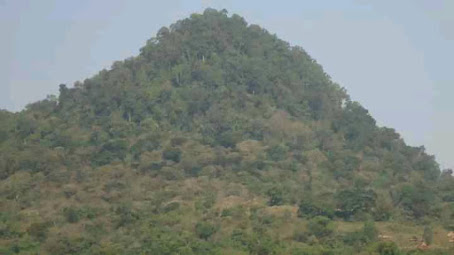Discovering Jimma, Ethiopia: A Hidden Gem of History, Nature, and Culture Nestled in the heart of southwestern Ethiopia, Jimma is a city that blends a rich cultural heritage, breathtaking landscapes, and a warm sense of community. Whether you’re a history enthusiast, a nature lover, or simply an adventurous traveler, Jimma has something special to offer. A Historical Treasure Jimma is renowned for its historical significance, serving as the capital of the Gibe Kingdom during the 19th century. One of its key attractions is the Abba Jifar Palace , which stands as a monument to the legacy of King Abba Jifar II, a ruler celebrated for his governance and contributions to the region. Walking through the palace, visitors can experience Ethiopia's royal history and marvel at the traditional Gibe architecture. Coffee Capital of Ethiopia Ethiopia is the birthplace of coffee, and Jimma holds a special place in its coffee culture. The nearby Kaffa region , from which coffee derives its na...
The Sambe Mount of Illubabor
Located in the Ilu Aba Bor Zone of the Oromia region, approximately 12 KM south of Gore town in Southwestern Ethiopia, the Sambe Mount holds historical significance. Gore, a town in the same region, is situated south of Mettu and 620 KM away from Addis Ababa, the capital of Ethiopia. Additionally, it is located 180 KM from Gambella City, the capital of the Gambella region.
In the 1930s, Gore served as the capital city of Ethiopia after an official declaration by the supreme council of the Ethiopian Monarch. The location of Gore attracted the central government for administrative purposes and economic significance. Over time, it became a bustling market hub connecting the Middle East, Sudan, and Ethiopia, attracting foreign merchants.
The Battle of Sambe took place from June 3, 1943 G.C. to July 14, 1943 G.C. It began when Italian Forces gathered 12 divisions from their bases in southern Majii, Keffa, Kullo, and Konta. They attempted to conquer Gore town by crossing the impenetrable jungle of Ilu and the River Qabar. However, the Sambe patriots, led by Shambal Woldayess Bullokko's army, thwarted the Italian troops. They broke the bridge of River Qabar, preventing the counterattack and fought valiantly until additional forces arrived from the Salgan Ilus, the nine clans of Oromo residing in the current day Ilu Aba Bor. The Sambe patriots, displaying bravery and tactical prowess, demonstrated that the color of their skin didn't determine superiority. Despite lacking air support or modern equipment, they successfully defeated the Italian invaders. Various warriors from Wallaga, Shawa (led by General Jagama Kello), and other nationalities such as Keffa, Majii, Mocha, and Mesengo also fought courageously, leaving unforgettable contributions.
The Battle of Sambe proved to be one of the bloodiest wars for Italy, resulting in significant casualties and wounded soldiers. The Sambe patriots' relentless attacks forced the Italian army to display the white flag for a ceasefire and surrender. Approximately 1,585 Italian soldiers were captured, along with 56 heavy weapons, including anti-aircraft weapons, and 20,000 small arms. This remarkable victory underscores the importance of acknowledging the forgotten Battle of Sambe, likening its significance to that of the historic Battle of Adwa.


Comments
Post a Comment